Clancy Tucker's Blog, page 115
May 29, 2019
30 May 2019 - RARE BLACK AND WHITE PHOTOGRAPHS

RARE BLACK AND WHITE PHOTOGRAPHS
G'day folks,
It's time to step back in time.







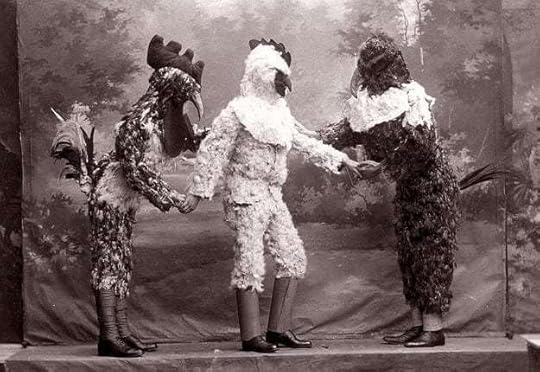



Clancy's comment: Did you see anyone you know?
I'm ...


Published on May 29, 2019 20:39
May 28, 2019
29 May 2019 - REMAINS OF A 27,000-YEAR-OLD SLOTH FOUND
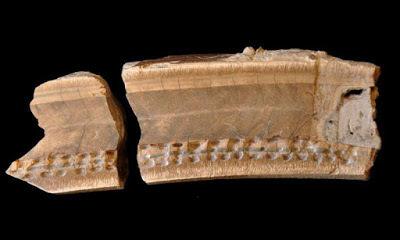
REMAINS OF A 27,000-YEAR-OLD SLOTH FOUND
G'day folks,
Welcome to some facts about another discovery. The sloth’s tooth, which was discovered in a deep pool in Belize, is helping scientists learn about the animal’s diet and the climate in which it lived.
In 2014, divers were searching for Maya artifacts in a deep sinkhole in central Belize when they stumbled upon the remains of a creature that long predated this ancient civilization. The hefty humerus, femur and tooth that were pulled from the pool once belonged to a now-extinct giant sloth—and as Ashley Strickland reports for CNN , analysis of the tooth has revealed a wealth of insight into what the animal ate, the climate that it lived in, and how it may have died.

The researchers who studied the tooth hoped to learn more about the environment in which megafauna went extinct thousands of years ago, but giant sloth chompers can be difficult to analyze, they explain in the journal Paleontology . For one, the animal’s teeth were devoid of enamel, which scientists use to learn about the diet of humans and some animal species. Ancient sloth teeth are also often fossilized, meaning that minerals have replaced much of the original bone and tissue.
For the new study, researchers relied on a technique known as “cathodoluminescence microscopy,” which causes minerals to glow and, in this case, helped the team hone in on the tooth’s surviving tissue. Fortunately, the researchers discovered that a dense type of tissue known as orthodentin was largely intact. They were able to extract 20 samples from the sloth tooth, which in turn allowed them to “trace monthly and seasonal changes in the sloth's diet and climate for the first time, and also to select the best part of the tooth for reliable radiocarbon dating,” explains Stanley Ambrose, study co-author and professor of anthropology at the University of Illinois.
The investigation revealed the tooth to be around 27,000 years old, and also indicated that the sloth was not living amid the dense tropical forests that cover this region of Belize today. Instead, it had been slowly making its way through a relatively open savanna. By analyzing stable carbon and oxygen isotopes in the dental tissue, the researchers were able to determine that in the last year of its life, the sloth had been eating a variety of vegetation during a fluctuating climate: a short wet season, followed by a dry season that lasted around seven months, followed by another short wet season.
“We were able to see that this huge, social creature was able to adapt rather readily to the dry climate, shifting its subsistence to relying upon what was more available or palatable,” says Jean Larmon, University of Illinois graduate student and lead author of the study.
The study’s findings align with what researchers already know about the climate in the Central American Lowlands during the Last Glacial Maximum, when large ice sheets sucked up much of the Earth’s moisture and led to low global sea levels. The region of modern-day Belize was arid and cool, and the “lower water table would have left much of the Cara Blanca area [where the sloth remains were found] desiccated,” the study authors write.

So while the sloth was quite adaptable in terms of diet, it was likely having a difficult time finding water. The researchers think it descended into the sinkhole in search of a drink—and though it stood around 13 feet tall, it wasn’t able to make it out of the pool, which is around 200 feet deep and quite steep. According to the study authors, the area is ringed with megafauna fossils, suggesting other unfortunate creatures met the same fate.
Scientists don’t know for certain why the ancient giant sloth went extinct, but the new study suggests that climate change wasn’t the lone culprit, since the animal appears to have adjusted well to the changing environment. Another potential factor is predation due to “the arrival of humans on the scene 12,000 to 13,000 years ago,” says Lisa Lucero, study co-author and professor of anthropology at the University of Illinois.
The study also shows how modern microscopy techniques can provide a detailed look at the final days of a long-extinct creature—based on a single, partially fossilized tooth.

Clancy's comment: Science sure has moved ahead when they can define the age of discoveries found. That always staggers me.
I'm ...


Published on May 28, 2019 19:09
May 27, 2019
28 May 2019 - STRANGE FLOWERS THAT WILL LEAVE YOU GOB SMACKED
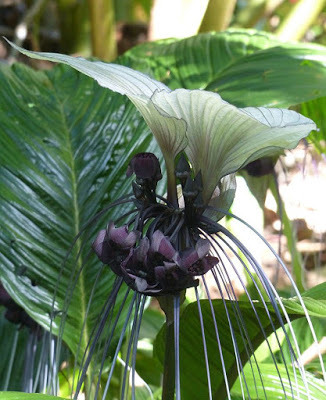
STRANGE FLOWERS THAT WILL LEAVE YOU GOB SMACKED
G'day folks,
Are you a keen gardener? Do you love unusual plants? Well, check out these masterpieces of nature.
In the world of flower lovers - those who like to grow and cultivate them in their homes or find them in nature, to observe and learn about them - the beauty, grace, and aesthetics of the growing world transcends almost everything else. But like everything in life, beauty is in the eye of the beholder, and there are some special plants and flowers from all over the world, some of which you may find strange, but others with which you will fall in love with at first sight.
Here are some extraordinary-looking flowers for you to see to help you discover another side of nature that you may not have necessarily known until today.










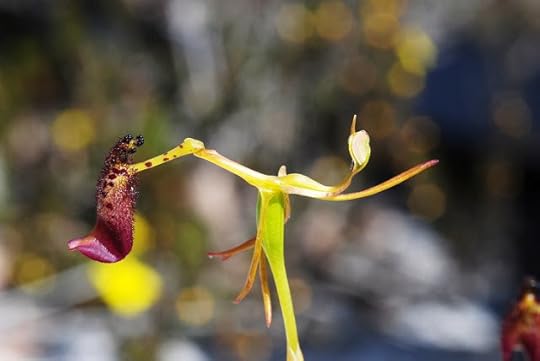
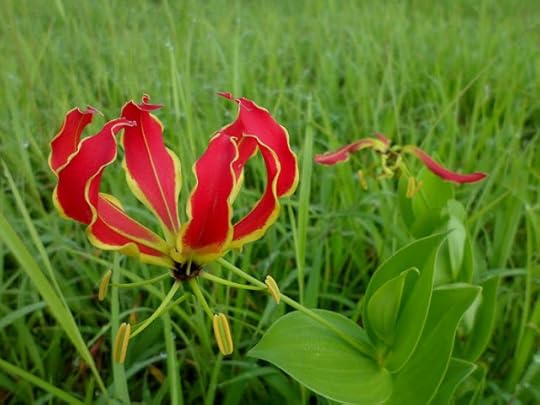

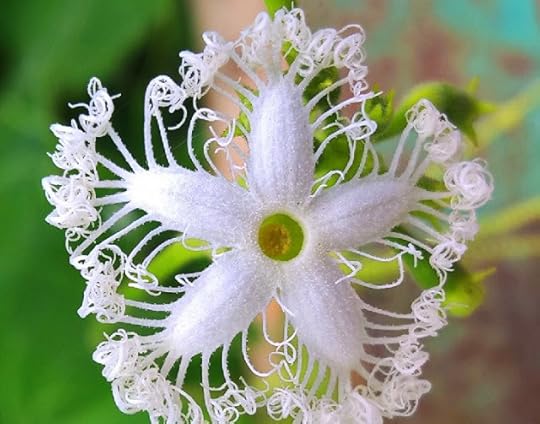
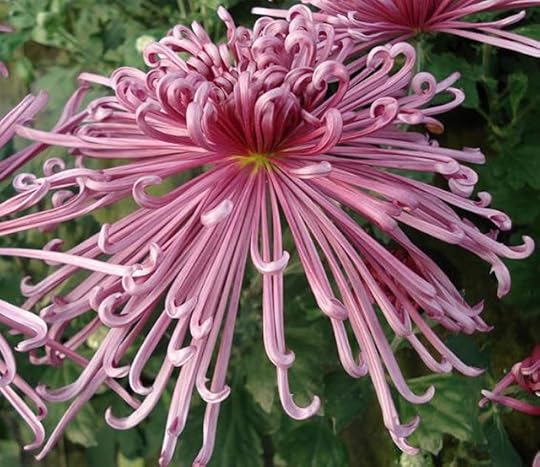
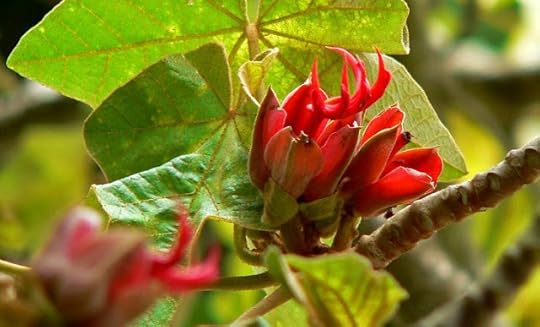
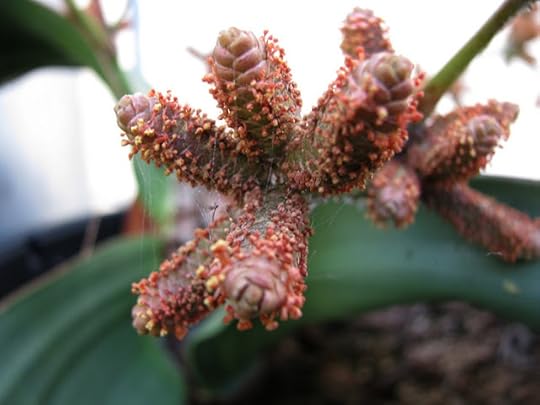


Clancy's comment: Brilliant specimens. Brilliant photography. I grew orchids for many years, and I've taken snaps of extraordinary flowers all over the world. Nature just keeps on surprising me.I'm ...


Published on May 27, 2019 20:40
May 26, 2019
27 May 2019 - Martin Luther King Jr.’s Family Home to Open to the Public

Martin Luther King Jr.’s Family Home to Open to the Public
G'day folks,
This famous property was recently purchased by the National Park Foundation.
During the three years leading up to his assassination, Martin Luther King Jr. lived with his family in a modest brick house in Atlanta’s Vine City neighborhood. His wife, Coretta Scott King, continued to live there until 2004, at which point it was used by the King family as an office, according to Shelia M. Poole and Ernie Suggs of the Atlanta Journal-Constitution . Now, the home is due to open to the public for the first time, following its acquisition by the National Park Foundation.

The foundation, which is the official charity of the National Park Service, announced last month that it had purchased the house from the estate of Coretta Scott King, subsequently transferring the property to the park service.The four-bedroom house will be part of the Martin Luther King Jr. National Historic Park (formerly a National Historic Site), which encompasses several buildings and sites in Atlanta,
“With greater access to Dr. King’s life and legacy, we can learn more about this country’s past and how his work continues to echo through time,” Will Shafroth, president of the National Park Foundation, said in a statement.

This marks the second time in recent weeks that the foundation has acquired a property connected to King. In December of last year, it bought the two-story house where the civil rights icon was born, and where he lived for 12 years with his parents and grandparents. That home had been owned by the Martin Luther King Jr. Center for Nonviolent Social Change. Because the property was included among the buildings that made up what was then the Martin Luther King Jr. National Historic Site, according to Mihir Zaveri of the New York Times , the park service had been able to offer tours in the house since 1984.
The King family home in Vine City, by contrast, was not accessible to the public, and it will open to tours for the first time, though it could take more than a year to get the house ready for visitors, Will Shafroth, CEO of the National Park Foundation, tells Poole and Suggs.
King, his wife and four children moved into the house in 1965, and purchased the property one year later. It was at this site, located at 234 Sunset Avenue, that mourners flocked to comfort King’s family in the wake of his assassination in 1968. Robert Kennedy, Jesse Jackson and Richard Nixon were among those who stopped by to pay their respects, according to the Washington Post ’s Michael E. Ruane. Jackie Kennedy, whose own husband had been assassinated only a few years earlier, embraced Coretta Scott King in her bedroom, Rebecca Burns writes in Burial for a King.

Though King didn’t live in the house for long, his daughter Bernice King tells Poole and Suggs that their time there was like that of any other “normal family.” They played basketball in the backyard and ate meals together in the dining room. Sometimes, she would jump off the kitchen refrigerator, with her dad waiting to catch her below. The other recently acquired property is known as King’s “birth home”; but this site on Sunset Avenue, Bernice King says, was the family’s “life home.”

Clancy's comment: It looks like a charming house, but it's a sad story about the previous owner. By the way, the font I use for this post is called Georgia.
I'm ...


Published on May 26, 2019 18:06
May 25, 2019
26 May 2019 - SPECTACULAR MOVING PICTURES

SPECTACULAR MOVING PICTURES
G'day folks,
Check out these photographs that rock and roll.



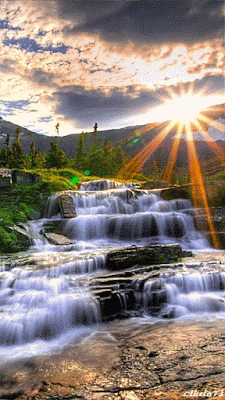
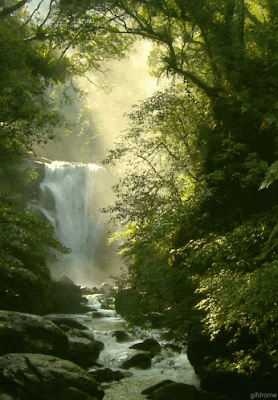
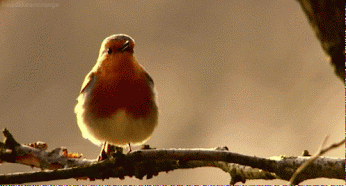








Clancy's comment: I loved the whale flying into the air.
I'm ...


Published on May 25, 2019 18:49
May 24, 2019
25 May 2019 - DA SHUHUA - FESTIVAL OF LIGHTS in CHINA
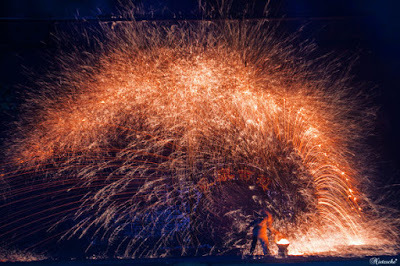
DA SHUHUA - FESTIVAL OF LIGHTS in CHINA -G'day folks,A spectacular annual festival centers around humans throwing molten iron against a wall at night. Sometime in the 12th century, the Chinese gave the world the gift of fireworks. Despite these jaw-dropping spectacles of aerial magic being appreciated by all, the pyrotechnics remained the provenance of the elite as, to the common man, they were tantamount to setting money ablaze for sheer sport. Enter Da Shuhua, or the Festival of Lights, an annual tradition dreamt up approximately 300 years ago by blacksmiths who wanted to participate in the annual Chinese New Year festivities but couldn’t afford the luxury of traditional fireworks displays.
Da Shuhua was their DIY answer to being priced-out of the celebration. Inspired by the sparks of their trade, under the darkness of night, blacksmiths in the village of Nuanquan, located in the the Hebei province, tossed cupfuls of molten iron against the city gate, hard and cool in the winter air. The result was a spectacular shower of blooms resembling giant glowing flowers from which the festival (translating to mean “tree flower”) took its name.
Still to this day, each Lunar New Year, the incredibly bold, somewhat insane tradition of tossing liquid metal heated to 1,000 degrees centigrade at the old city wall with nothing but sheep fur and straw hats for protection continues to stand tall in a city once known for its community of smiths. Though the display originated purely with iron cast against the wall – leaving a thin coating visible year-round – later experiments involved incorporating aluminum and copper into the molten display, producing green and white tones interspersed among the iron’s brilliant red.
Despite crafting a celebration from out of nowhere that resembles nothing else on earth, only four Da Shuhua performers remain in Nuanquan at last count. Making matters worse is the fact that the majority of these men are over the age of 40, meaning the tradition’s future is a precarious one.
Given such tenuousness, there’s no time like the present to catch a glimpse of Da Shuhua’s fleeting wonder before the populace is once again tricked into thinking fireworks are the most insurmountably beautiful example of fiery magic in our world.

Clancy's comment: Mm ... Here in Australia, we have heaps of fireworks, worth millions, at special events, but it's quickly gone in a puff of smoke. All that glitz might look spectacular for a brief moment, but surely the money could be better used?
I'm ...


Published on May 24, 2019 17:00
May 23, 2019
24 May 2019 - A BUNCH OF GREAT QUOTES

A BUNCH OF GREAT QUOTES
G'day folks,
Yep, it's time to be inspired. Pass these onto whoever needs them.












Clancy's comment: I love the one of the five little ballet girls.
I'm ...


Published on May 23, 2019 18:20
May 22, 2019
23 May 2019 - Spectacular Pyramid of Kukulcan at Chich'en Itza, Mexico
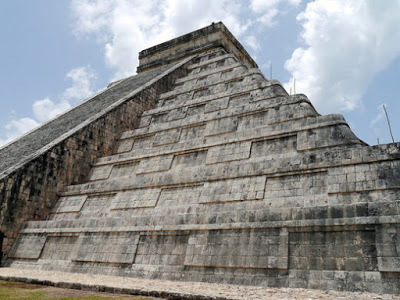
Spectacular Pyramid of Kukulcan at Chich'en Itza, Mexico
G'day folks,
Not all pyramids are in Egypt. Every equinox this Mayan pyramid puts on a spooky ancient light show.
A two-and-a-half hour bus ride from Cancun takes you away from the thumping parties of spring break and into the once thriving ancient capital of the Yucatán Mayans—Chich’en Itza. During the spring and autumn equinoxes thousands of tourists and locals pack in around the pyramid to recreate the parties of a thousand years ago—sans the cutting out of hearts—and to watch the “descent of Kukulcan.” A carnival atmosphere fills the surrounding meadow with sounds of drums, traditional music and cheering crowds.
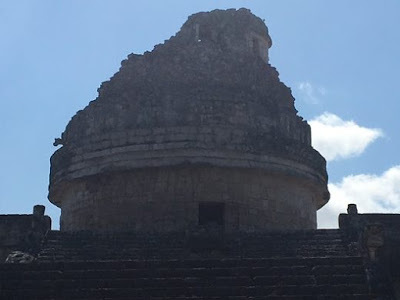
According to legend, twice a year when the day and night are in balance, this pyramid dedicated to Kukulcan (or Quetzalcoatl), the feathered serpent god, is visited by its namesake. On the equinox Kukulcan returns to earth to commune with his worshipers, provide blessing for a full harvest and good health before entering the sacred water, bathing in it, and continuing through it on his way to the underworld.
A handclap near the base of the pyramidal results in an unusual chirping echo, which is said to replicate the call of the sacred quetzal bird.
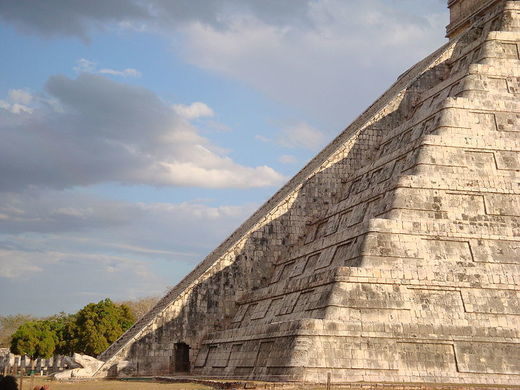
All legends aside, crafty and mathematically brilliant architecture combined with the natural rotation of the Earth creates an amazing and somewhat eerie image of a giant snake crawling down the temple. For five hours an illusion of light and shadow creates seven triangles on the side of the staircase starting at the top and inching its way down until it connects the top platform with the giant stone head of the feathered serpent at the bottom. For 45 minutes this impressive shadow stays in its entirety before slowing descending the pyramid and disappearing along with the crowd that gathered to see it.
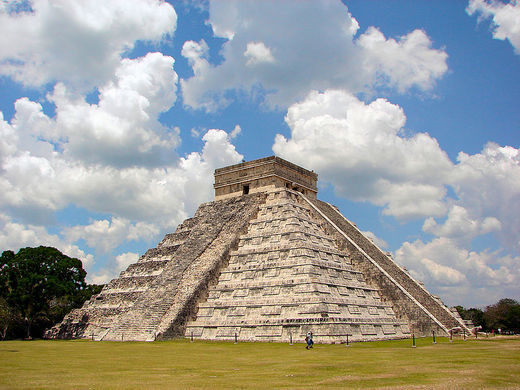
The Pyramid of Kukulcan (also know as El Castillo, a name given by the Spanish Conquistadors) is the central of Chich’en Itza, it was built over a pre-existing temple between 800 and 900 AD.It is the biggest pyramid in Chich’en Itza; at its base 53.3 meters wide on all four sides. It towers above the other monuments at 24 meters tall with a 6 meter temple on top of the highest platform. Before access to the throne room of the pyramid was restricted, you could climb to the top and, on a clear day, see the top of the grand pyramid at the nearby ruin site of Ek Balam.
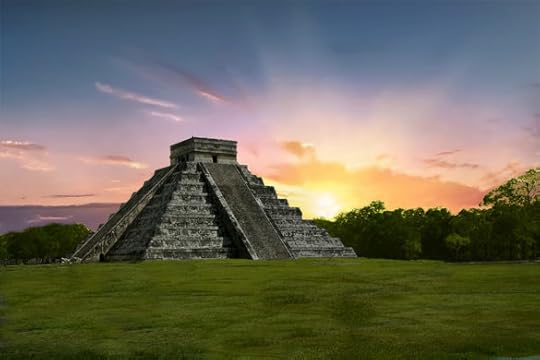
The Mesoamerican fascination with, and knowledge of, math and astronomy shines when examining the details of its architecture. Each of the four sides has ninety-one steps ascending it, 364 steps total, with the temple topping the pyramid considered an addition step totaling 365, each step representing a day in the calendar. Additionally, the pyramid’s nine stages, bisected by a staircase on each side, represent the eighteen months of the Mayan Calendar year. The pyramid was built to be a physical representation of the Mayan Calendar (the same calendar that predicts the end of the world in 2012), while its orientation, slightly North East, is believed to have been calculated in order to create the phenomenon know as the “Descent of Kukulcan”.
This phenomena is recreated nightly (artificially) during the Light and Sounds Show at 7pm in the winter and 8pm in the summer.
Chich’en Itza is one of the New Seven Wonders of the World, and a UNESCO World Heritage Site.

Clancy's comment: Amazing, eh? I'd love to visit this wonder. The more I discover places like this, the more I believe we humans haven't come all that far. Some of these ancient people were extraordinary, and they had no computers, Google or Facebook.
I'm ...


Published on May 22, 2019 18:43
May 21, 2019
22 May 2019 - THE ROYAL BURIAL MOUNDS IN SWEDEN

THE ROYAL BURIAL MOUNDS IN SWEDEN
G'day folks,
Welcome to some facts about ancient burial mounds for royalty in Sweden.
Dating back to the 5th and 6th centuries, the Royal Mounds of Gamla Uppsala have been shrouded in mystery for generations. Some believed the three large mounds to be gods Thor, Odin, and Freyr, others thought them to be the burial sites of legendary kings, while some people believed them to be, well, simply natural lumps of dirt. The latter speculation angered Swedish King Karl XV, and in 1830 he commissioned a widely publicized excavation to settle the matter once and for all.

Headed by Bror Emil Hildebrand, the first archaeological dig of the Eastern Mound confirmed that it was indeed a burial site, though findings were less than spectacular: A clay pot of burned bones and some burial gifts. They believed it to be a grave for either a young woman or a young man and a woman. The second excavation in 1874 of the Western Mound yielded more impressive findings of warrior equipment, luxury weaponry, as well as a prominent man dressed in a suit of golden threads. This grave was confirmed to date back to the 6th century.
Though archaeologists were unable to identify the bodies of the mounds, they are quite certain the mounds belonged to a royal dynasty. As Sweden’s oldest national symbols, the Royal Mounds have retained their significance, especially emphasized by a trip from Pope John Paul II in 1989. The three mounds are known today as the Eastern, Middle, and Western Mounds.

Clancy's comment: There ya go. Interesting, eh? I bet you are glad you now know what the mounds were for.
I'm....


Published on May 21, 2019 20:03
May 20, 2019
21 May 2019 - THE FLOGSTA SCREAM IN SWEDEN

THE FLOGSTA SCREAM IN SWEDEN
G'day folks,
I bet you will love this informative post. A nightly tradition fills the streets of Flogsta, Sweden, with a collective scream.
The Flogsta Scream occurs every night at 10 p.m. when university students living in Uppsala’s Flogsta neighborhood stop what they’re doing and let out a collective scream from their windows, balconies, and rooftops.

It’s a tradition that dates back to the 1970s, though details regarding how or why the tradition started are difficult to come by. The most extensive account of the Flogsta Scream comes from Wikipedia, which postulates that the Flogsta Scream may have started as a way to blow off steam during exam periods or possibly to commemorate a student who committed suicide. The article, however, cites no sources and additional information is scarce.

Still, it’s a useful thing to know, should you find yourself on a nighttime stroll in Uppsala, that the spontaneous shrieks from the nearby dormitories are no cause for alarm.
 Clancy's comment: It's probably good for them. Man, there are heaps of times when we all feel like screaming. However, it probably sounds like a mass murder.I'm ...
Clancy's comment: It's probably good for them. Man, there are heaps of times when we all feel like screaming. However, it probably sounds like a mass murder.I'm ...

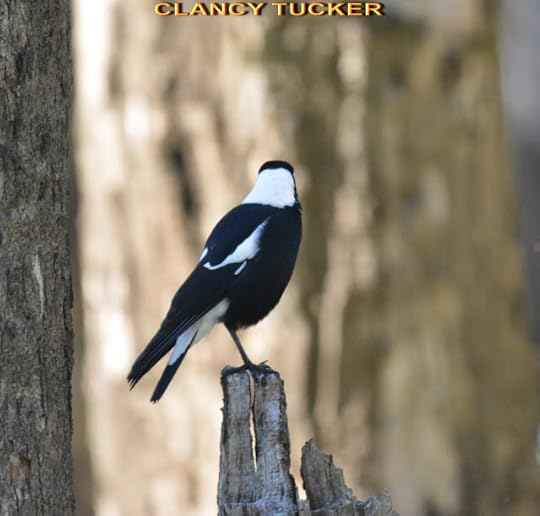
Published on May 20, 2019 17:30



